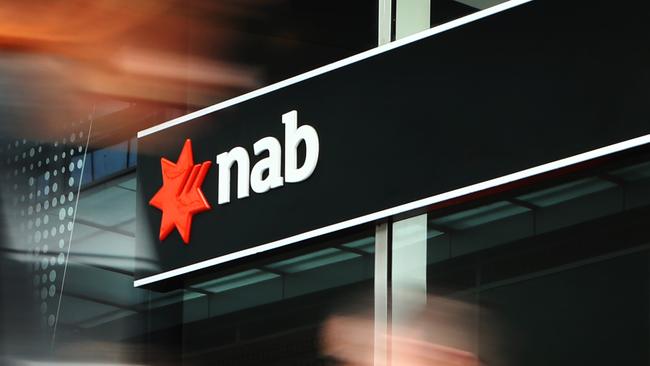NAB announces out-of-cycle mortgage rate hikes after sitting out last round of increases
NAB customer chief Mike Baird has come out in strident defence of the bank’s decision to raise home loan interest rates.

National Australia Bank customer chief Mike Baird came out in strident defence of the bank’s decision to raise home loan interest rates yesterday, as attention turns to whether the other major banks will hit borrowers for a second time in six months.
NAB’s decision was largely attributed to higher funding costs and the bank stressed it hadn’t followed its rivals last year in raising variable home loan rates. The NAB rate rises came across the home loan book, despite earlier statements that it was reluctant to penalise existing customers.
Mr Baird told The Australian funding costs had worsened since the bank’s decision to hold rates steady for as long as possible in September 2018, while competitive and regulatory pressures remained.
“This is a daily journey,” Mr Baird said of assessing the bank’s funding costs. He cited higher wholesale funding costs and a widening of about 15 basis points in the three-month overnight index swap spread since September.
On the issue of why the bank passed the rate increases to existing as well as new customers Mr Baird said: “All of those in the back book have an extra $70 million.”
He was referring to the amount NAB estimates remained in customers’ wallets after its decision not to follow its big three rivals in lifting mortgage interest rates last year.
The NAB rate increases range from 12 basis points on owner occupied loans to 5.36 per cent, for those that pay principal and interest, to 16 basis points across investor loans for principal and interest and interest only. Owner occupier interest only loans rise by 16 basis points to 6.41 per cent.
The increases mean households with a $350,000 mortgage will have their principal and interest repayments climb by $26 a month or $313 a year, according to RateCity. For a $500,000 mortgage the additional cost is $37 a month or $447 annually.
Mr Baird shared the responsibility for the rates decision with group chief executive Andrew Thorburn, who is on extended leave.
“Andrew remains connected and has been part of the decision,” he said.
Mr Thorburn is on extended leave for most of January and February but will return to work for several days, during next week, to help with the bank’s Hayne royal commission response.
Bank of Queensland and its subsidiary Virgin Money are among lenders that have also raised interest rates on home loans so far this year. BOQ also raised rates in 2018, due to funding costs.
The out-of-cycle rate hikes by lenders come, however, as the Reserve Bank of Australia continues to hold the official cash rate at a record low 1.5 per cent, and a growing number of economists say the next move could be down.

RateCity research director Sally Tindall tipped the other large banks would follow NAB’s lead.
“Already this year we’ve seen BoQ and Virgin Money hike rates due to cost of funding pressures. Now that NAB has hiked as well, others are likely to follow in its shadow,” Ms Tindall said.
“NAB’s previous decision to keep rates on hold was designed to win back the trust of their customers. It was also a play to get new customers in the door.
“The strategy appears to have worked. In October 2018, NAB surpassed ANZ in terms of home loan market share. They now have the third largest home loan book.”
The changes take effect from January 31 for existing customers as well as new ones.
Deutsche Bank analysts have told clients funding cost pressures were re-emerging at the banks.
“Major bank credit default swap spreads improved, falling by about 7 basis points on average. However the Bank Bill-Overnight Indexed Swap spread deteriorated slightly, rising by 2bps to reach 60bps, which is around the level seen during the recent peak in June last year,” they said. “Banks have been busy again in funding markets, and its getting more expensive.”
NAB’s decision comes just over a week out from when the Hayne royal commission’s final report will be delivered to the federal government.
While the industry awaits the historic document, Mr Baird said it provided banks an “incredible opportunity” to revisit their cultures and services.
“We are looking forward to those recommendations,” he said, noting the industry would come out the other side of the commission in a better position.
“We are going to be much stronger … I think the industry will be much stronger.”
Mr Baird said the decision to increase interest rates was “not taken lightly”as the bank sought to achieve a balance between rewarding customer loyalty with shareholder outcomes and responding to higher funding costs.
He added that NAB had not increased its standard variable rate since March 2017.
NAB’s shares edged up 0.3 per cent to $24.58 on Thursday.
In a bizarre twist though, Mr Baird also said NAB had started an initiative “proactively contacting” home loan customers on their financial situation and had told a large group they could “take a breather on payments” because they were ahead on servicing their loans.
“Through these check-ins we’ve advised more than 100,000 customers that they’re ahead on their repayments, which gives them flexibility,” he said.







To join the conversation, please log in. Don't have an account? Register
Join the conversation, you are commenting as Logout